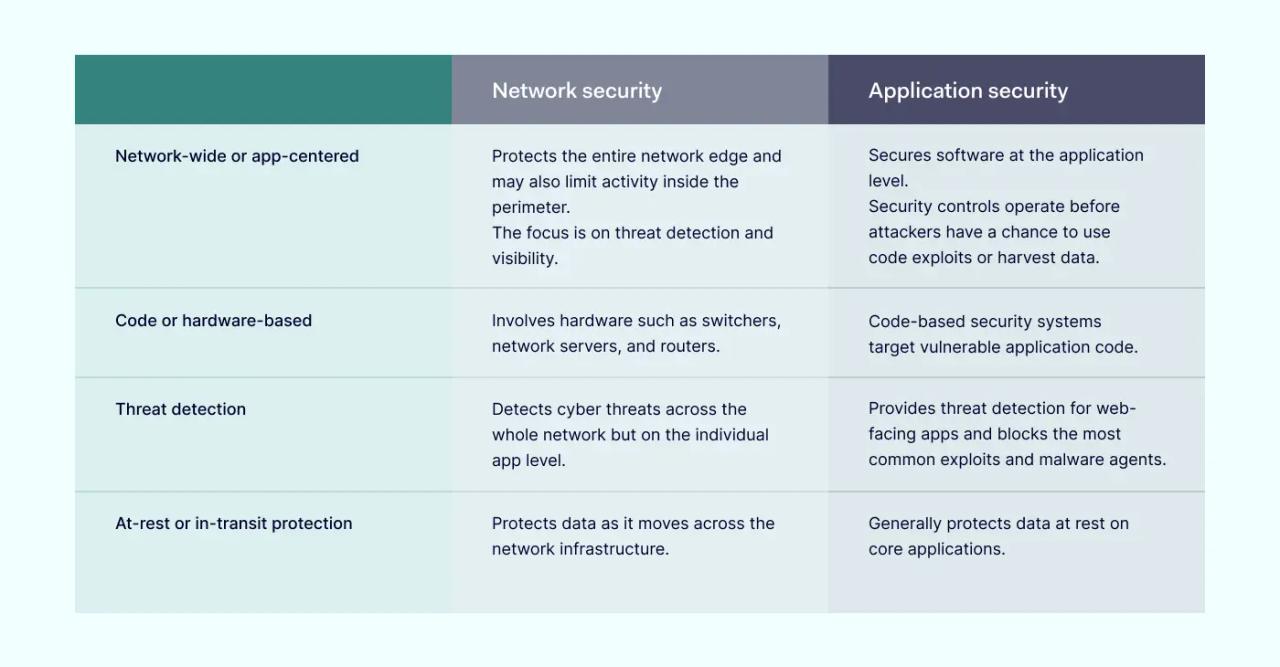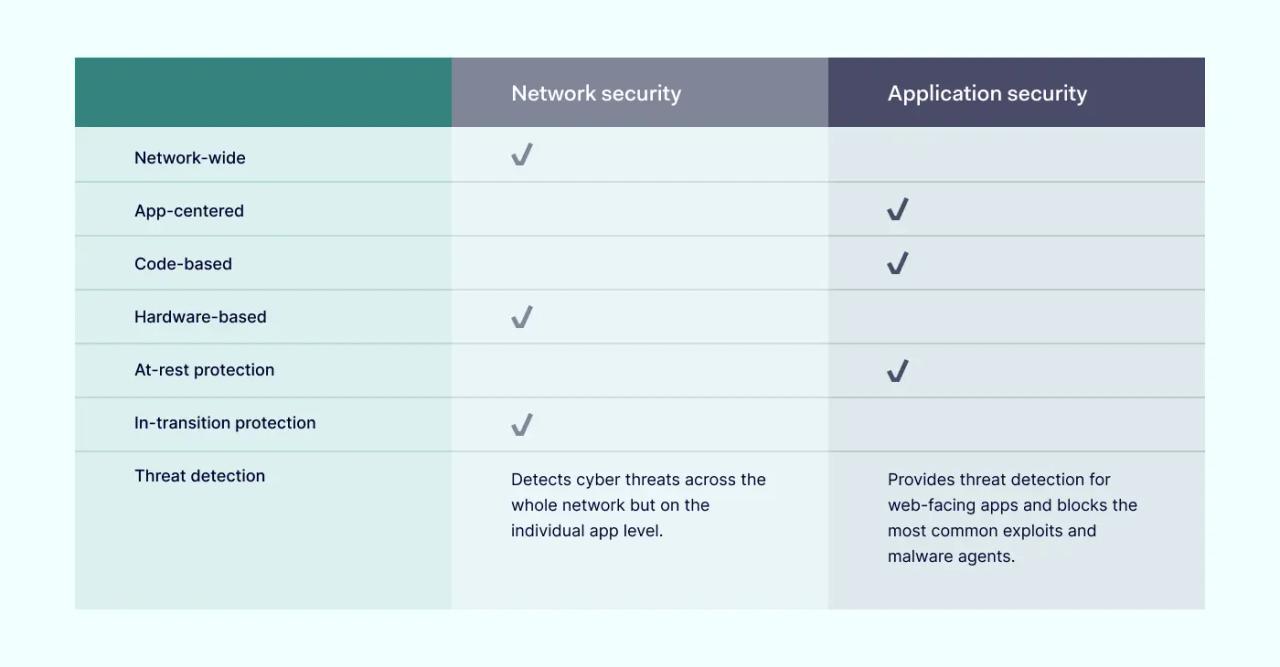As technologies change and remote working grows there has never been a greater need to make security more robust. Effective cybersecurity guards sensitive data and applications while enabling access for authorized users. To create a setup that works, it’s crucial to understand the difference between network and application security.
Key takeaways
- Network security uses tools like firewalls and VPNs to keep the network safe from outsiders and now includes encryption for cloud and home work.
- Application security makes individual apps safe by finding and fixing weak spots with the help of databases and firewalls, making SaaS services more secure.
- Network security protects the entire network, while application security looks at software to stop data theft.
- Network security uses devices like routers to control network traffic, but application security fixes software with coding.
- The best security for a business depends on how much it uses the cloud; application security is key for cloud use, and network security is important for in-house networks, so using both is best for full protection.
What is network security?
Network security guards core network assets against external attackers.
Traditional security focuses on network perimeters. Firewalls, password controls, and VPNs all strengthen the network edge. This approach guards single perimeters well. But it struggles when the single perimeter concept doesn’t apply.
Cloud applications, remote workstations, and dispersed endpoints complicate the picture. These technologies have increased the attack surface by dissolving network perimeters.
Modern network security has developed as well. Features like encryption and segmentation protect critical assets. Internal traffic scanning tracks suspicious activity. Intrusion Prevention Systems (IPS) guard network edges. Secure Web Gateways (SWG) block unauthorized web traffic.
The important thing about network security is that it covers the entire network. Measures can be superficial or deep. But they always protect network infrastructure against intrusions and damage.
What is application security?
Application security (AppSec) takes a different approach. Internet-facing apps and APIs are common sources of malware infection or data theft. AppSec secures individual applications against external threats. It assesses each application, isolating any vulnerabilities before attackers can exploit them.
AppSec tools generally refer to databases of application vulnerabilities such as the Common Weakness and Enumeration CWE) database or the U.S. National Vulnerability Database (NVD). These databases provide up to date information about code weaknesses and remediation strategies.
Application security tools function alongside other tools to secure SaaS services SaaS-specific ools include Cloud Access Security Brokers (CASB) and Web Application Firewalls (WAF). Network micro-segmentation and Identity Access Management (IAM) may also feature. Together, these capabilities represent an effective shield for most SaaS or web applications.
Network security vs. application security

1. Network-wide or app-centred
Network security takes a holistic approach at the enterprise network level. It protects the entire network edge and may also limit activity inside the perimeter. The focus is on threat detection and visibility. Security tools resolve all security issues affecting the entire network.
Application security secures software at the application level. Security controls operate before attackers have a chance to use code exploits or harvest data. AppSec also operates close to the apps involved. Apps could be local, but AppSec may also guard externally hosted cloud resources.
2. Code or hardware-based
Network security solutions involve hardware such as switchers, network servers, and routers. Security teams must be able to change and update hardware as needed. They must manage integration issues, while network hardware and security software such as firewalls must work in harmony.
AppSec is code-based. Security systems target vulnerable application code. Flawed code presents opportunities for attackers. Skilled programmers must change this code and fix any issues.
3. Threat detection
Network security combats cyber threats across the whole network and does not focus on individual apps. This solution covers more ground. But it is not granular enough to protect SaaS assets.
AppSec secures the endpoints where SaaS apps and network infrastructure meet. It provides threat detection for web-facing apps and blocks the most common exploits and malware agents. Meanwhile, CASB tools guard against unauthorized traffic between network infrastructure and SaaS assets.
4. At-rest or in-transit protection
Network security solutions protect data as it moves across the network infrastructure. Tracking tools deliver insights to detect threats, limit access, and optimize performance. Segmentation creates zones of trust to reduce east-west movement.
Application security generally protects data at rest on core applications. Robust AppSec measures guard against code exploits or unauthorized access. These protections ensure that sensitive data held on SaaS customer databases are secure. It's a core part of protecting against data breaches for cloud-dependent businesses.
Which type best fits your business needs?

Application security is crucial for all organizations reliant on cloud computing.
AppSec secures web-facing cloud assets, including SaaS tools like Zoom or SalesForce. Companies can target security precisely. Controls guard the interface between SaaS applications, internal infrastructure, and the external internet.
Security teams address vulnerabilities as threats emerge. Software based firewalls cordon off data or apps. They also tightly control access to every web application. Secure Web Gateways create app-specific portals to access the internet.
Network security is crucial for securing any on-premises or distributed network infrastructure. Features include firewalls, access portals, segmentation, and threat detection systems. They work together to protect enterprise network assets.
Companies must secure routers, servers, and endpoints such as mobile devices, but they also must protect applications – especially those with cloud interfaces. This situation makes an integrated security strategy vital. There is no competition between the two approaches. Balancing app and network security is essential.